|
|
BASIC
ELECTRONICS COURSE
THE
SCHMITT TRIGGER
Page 49
 INDEX
INDEX

One of the most universal chips
is the Hex Schmitt Trigger, known
as the 74C14. It is also marketed as 40106, 40014, and 74HC14. These are CMOS chips and are characterised by low current consumption, high input
impedance and a supply voltage from 5v to 15v. (Do not substitute 7414 or
74LS14. They are TTL chips and operate on 4.5v to 5.5v and have low impedance
inputs.)
Fig: 1 shows the six Schmitt gates in a 74c14 chip.
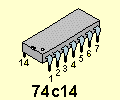
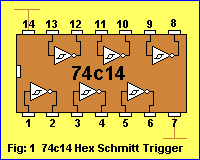
Fig: 2 shows the symbol for a
single input Schmitt Trigger Inverter with power rails:
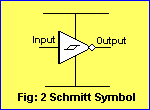
Fig 3 shows the Schmitt Trigger
characteristic incorporated into other gates:
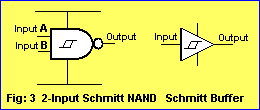
We will concentrate on the single-input Schmitt Trigger gate as
contained in the 74c14 IC.
Fig: 4 shows the Schmitt Trigger Characteristic:
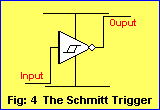 The
output is HIGH until the input rises to 66% of rail voltage.
The output goes LOW
when the input goes above 66%.
The output remains HIGH until the input fall to
33%.
A Schmitt Trigger gate can be wired as an oscillator, delay, inverter (and
other functions, depending on the surrounding components).
Fig: 5 shows the Schmitt Trigger wired as an oscillator, delay
and inverter:

Each of the 6 gates in the 74c14 can
be used to create a separate "building block" and this
gives the chip a wide range of capabilities.
THE FREQUENCY OF AN OSCILLATOR
When a capacitor and resistor are added to a Schmitt Trigger gate, as shown in
the first circuit
of Fig: 5 above, the result is an oscillator called a MULTIVIBRATOR. A
multivibrator has the feature of producing a square wave and this
waveshape can have equal high and low periods (called 50:50 mark:space ratio) or any ratio of high and low
periods. The HIGH period is called the MARK and the LOW is
called the SPACE.
The frequency of an oscillator depends
on the value of R and C. There is no fixed "ratio" for these components however it
is best to refer to sample circuits to see the values needed for a particular
frequency - otherwise you may arrive at "unusual" combinations such as
very large capacitors and very small resistors to achieve a high
frequency.
The frequency of a Schmitt oscillator is determined by the following equation:
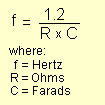
An easier equation to work with is:
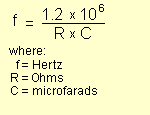
Oscillator circuits for the 74c14 can be separated into three categories:
1. Low frequency
2. Medium frequency, and
3. High frequency.
Low frequency oscillators are below 1Hz and can also be classified as
DELAY circuits or TIMING circuits.
Medium frequency oscillators range from 1Hz to about 500kHz.
High frequency oscillators are above 500kHz.
We separate circuits into three categories due to the value of capacitor
needed.
For low frequency oscillators the capacitor is an electrolytic, ranging
from 1u to 220u.
For medium frequency circuits the capacitor is a ceramic 1n to 100n
For high frequency circuits the capacitor is a ceramic 47p to 1n
The value of R should be in the range 10k to 4M7 in all cases.
The maximum frequency for a particular chip will depend on the supply voltage
and the type of chip.
Some chips do not like supply voltages below 5v (maximum supply voltage is 15v
for all chips in this discussion) while other chips (HS) are especially made for high
speed operation. All chips will operate up to 500kHz with a 5v to 12v supply.
Requirements outside this range will need special investigation. Some chips
are designed to operate down to 2-3v.
Fig: 6 shows sample oscillator circuits with approximate values for R and C.
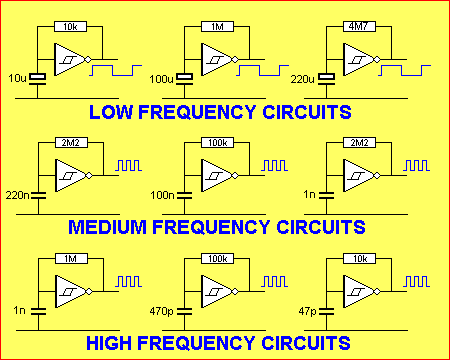
Fig: 6 Low, Medium and High frequency Schmitt Trigger Oscillators
FREQUENCY
CALCULATORS
Each gate of a 74c14 is capable of delivering up to 20mA with a 12v supply, 15mA with a
9v supply and 10mA with a 5v supply. A buffer transistor can be used to increase
the output current if needed.
Fig: 7 shows how a buffer transistor is connected to the output of a
gate:
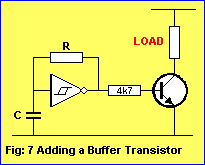
The voltage and current (called the "supply") for the 6 gates in a 74c14 comes from pin 14. The ground
pin for the chip is pin 7. Each gate on a circuit
diagram is normally shown without the power rails. It is understood they are present.
Fig: 8 shows the power rails for a 74c14 and the individual gates:

HOW A GATE WORKS
The next diagram (it is a repeat of Fig: 4 above) shows how the output of a Schmitt gate jumps from HIGH-to-LOW and
LOW-to-HIGH as the input voltage rises and falls:

The output of a Schmitt Trigger gate is the opposite of the input. When the input is LOW,
the output is HIGH.
As the input rises to 66% of rail voltage, the output instantly goes LOW and the
input has to fall to 33% of rail voltage for the output to go HIGH.
The gap between 33% and 66% is called the HYSTERESIS GAP and this has been
specially designed so that the input does not detect small fluctuations.
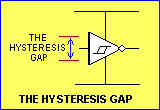
Fig: 9 shows a voltage being applied to the Schmitt gate. The voltage is 55% of
rail and this is not sufficient to change the output:
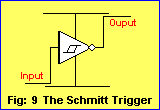
The following figure shows a normal gates. It changes when the input rises above about 53%
of rail voltage and changes back
when the input falls below 47%.
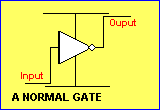
The following diagram shows the very small gap for a normal chip,
where the output jumps from HIGH-to-LOW in an uncontrolled manner:
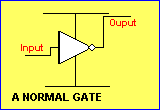
Here's the secret of a Schmitt gate: Any noise (up to 60%) entering a Schmitt
Trigger will not alter the condition of the gate. Any noise up to 55% entering a
normal gate will change the output:


There is one other problem with a normal gate. When the input is in the range of about 47%
to 53%,
the output goes high/low very rapidly. This is called the INTERMEDIATE ZONE
and the output does not know if it should be HIGH or LOW.
Fig: 10 shows the input voltage varying in this intermediate zone and the output
fluctuating very rapidly:
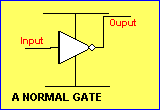 Even
a fixed voltage in the intermediate zone will cause the output to fluctuate:
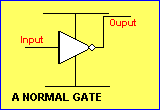
This is due to the
high gain of the amplifier in the gate and it does not know if the output
should be high or low. It is essential for the input voltage to pass
through this zone
very quickly to prevent the gate "oscillating."
The output will only fluctuate when the input voltage is rising slowly or sits
in the zone, as it takes a short
period of time for the gate to start oscillating.
For this reason a normal gate is not suitable for low frequency (slow-rising
waveforms).
The Schmitt gate does not have this problem.
If the voltage on the input of a Schmitt Trigger rises very slowly, the output changes at 66% and it
will only change back to its original state when the voltage drops to 33% of
rail voltage. At no time does the gate self-oscillate. This is one of the advantages of the Schmitt Trigger.
Fig: 12 shows how a Schmitt gate can be considered to be similar to a common-emitter NPN
transistor:
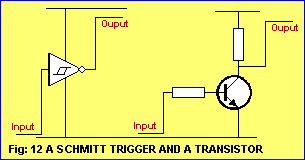
The similarity is only approximate and you can see the
general operation of each circuit has some similarities. It is important to note
that the two circuits cannot be interchanged without modifying the surrounding components.
SWITCH
DEBOUNCE
A Schmitt gate can be used to eliminate noise from a switch. When any
type of mechanical switch is closed, the contacts "bounce" due to the
dirt and an oxide coating on the contacts and this puts noise on the line.
Sometimes this noise is seen as additional pulses by high-speed digital circuits
with the result of "false-counting." The Schmitt gate circuit below
prevents multiple pulses from being passed to a circuit:
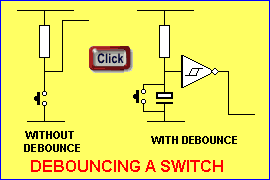
Mouseover to see switch action
SIGNAL CONDITIONING
The Schmitt Trigger can be used to improve the quality of a signal by speeding
up the rise and fall times. The rise and fall time is called the TRANSITION
TIME. The Schmitt trigger will reshape a waveform into a square wave.
It will also convert a SINEWAVE or ANALOGUE waveform to a SQUAREWAVE.
Any form of improving a signal to a square wave is called SIGNAL
CONDITIONING.
This is also called RISE-TIME improving.
The Schmitt Trigger produces a fast-switching digital output suitable for edge triggering.
Fig: 14 shows waveforms improved by a Schmitt Trigger.
Only excursions above 66% will appear in the output:
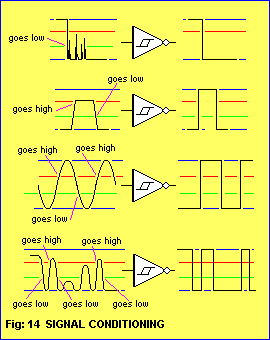
SWITCHING
THRESHOLD
The SWITCHING THRESHOLD is the point where a signal changes logic states.
A Schmitt Trigger has two thresholds - or TRIP POINTS. A positive going threshold (Vt+) and
a negative going threshold (Vt-).
The positive going threshold is also called the UPPER THRESHOLD and occurs at
66% of rail voltage. The LOWER THRESHOLD occurs at 33% rail voltage.
The difference between the two thresholds is called the HYSTERESIS
ZONE.
A signal will not change the state of the gate until it
passes the positive going threshold. A high signal that enters the Hysteresis
Zone will not change the state of the gate until it reaches the negative going threshold.
Besides preventing unwanted oscillation, the Hysteresis Zone also
provides noise immunity.
THE 4093 IC
Another common Schmitt
Trigger IC is the 4093. This is a Quad 2-Input Schmitt Trigger.
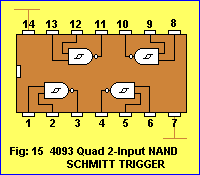
The CD 4093 is sometimes used for its gating capability. One of the inputs of
the gate can used to turn the gate on and off. This is called GATING.
This feature can be
achieved with a single-input
Schmitt Trigger with a diode.
This allows the 74c14 IC to be used.
Fig: 16 shows how to substitute a 4093 NAND gate for a single-input gate:

SUBSTITUTING THE 555
The 555 can be replaced by the 74c15 in almost every case, with the advantage
of lower quiescent current and the availability of 6 building blocks. The 74c14 Schmitt
gate is comparable with the 7555 (the CMOS version of the 555).
Fig 17 shows a 10 MINUTE TIMER. The circuit is also called a DELAY
circuit:
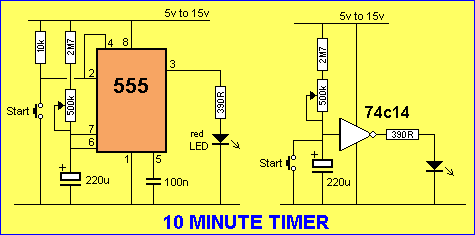
The 555 replaced by a Schmitt gate and a transistor to provide the
drive-current:

SUMMARY
A Schmitt Trigger is a bistable (two-state) device used to square-up
waveforms with slow rise and fall times.
The most common applications are THRESHOLD DETECTION
and SIGNAL CONDITIONING.
Speeding up the TRANSITION (rise and fall) time affects the shape of the
waveform, turning poor signals into reliable waveforms capable of
driving digital ICs.
The THRESHOLD DETECTION
feature will prevent signals with insufficient amplitude (such as noise) from
activating the clock lines of digital chips.
See Page 76 for more discussion on the Hex
Schmitt Trigger
NEXT page of this course

|
























